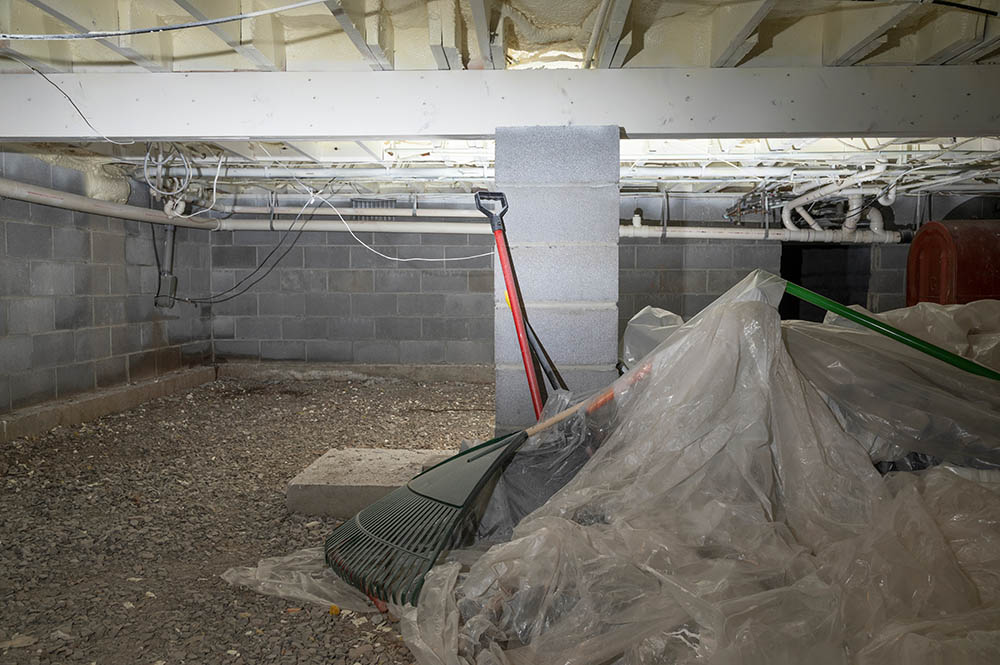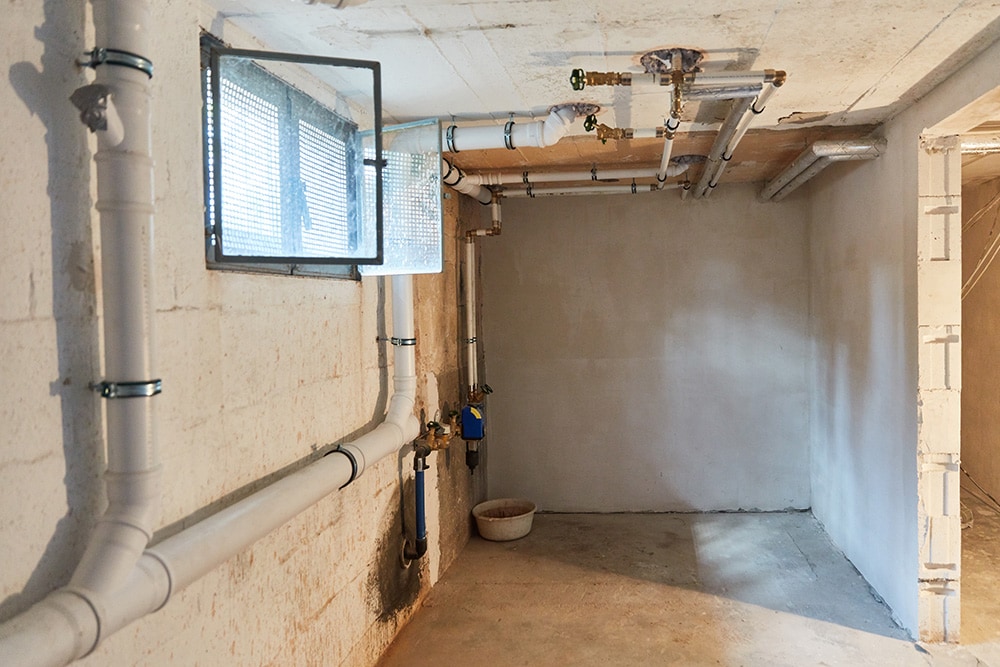What Is a Drainage Tile? Types, Uses, & FAQ
-

- Last updated:

If you live in an area with heavy or moderate rain, you must ensure that your home is prepared for the worst. Thousands of homes flood every year, but some damage caused by flooding is preventable. One such mechanism for the prevention of basement flooding is drain tile. You might be thinking, “Why would I put tiles in my basement, especially if it is unfinished?” The word “tile” is a bit misleading. Drainage tile is a system of perforated pipe or tubing placed underground to drain your property of excess water. It works in conjunction with a sump pump which can detect an excess of water from above or below due to a high water table. When water collects in the ground and enters the perforated pipe, it enters the sump basin. From there, it is drained out of your property.
How Does It Work?
The association with the word “tile” is most likely because the first drain tiles were made of terracotta clay. Nowadays, they are primarily corrugated or PVC pipes, and the piping is surrounded by drain rock. The rock needs to be bulky enough not to contain excess degrees of sediment that could enter the line through the perforations. Water enters this pipe, usually from above. Then, depending on whether the application is residential or agricultural, it will be emptied into a sump basin or run directly off the property. If you are a homeowner with drain tile, chances are that you have a sump basin where a sump pump empties the water from your property.

What Are the Different Types of Drainage Tile?
Clay
This is the oldest generation of drain tiles. When clay drain tile is installed, holes are not drilled into the clay segments. Instead, small gaps are left in between each piece to allow water to enter. To protect the tile from the drain rock placed on top, a broken piece of terracotta tile is set to bridge the gap. Clay drain tile typically has a long lifespan even though it is outlasted by plastic.
Corrugated Drain Tile
This second generation of drain tile first appeared in the late 1960s. Corrugated drain tile is made of polyethylene plastic. Corrugated pipes have ridges that prevent pieces of drain rock from blocking the gaps found in between. They also may be used with perforations. To prevent excess sediment from entering, sometimes there are filter socks that are placed over individual pieces of the drain tile.

PVC
PVC drain tile is the third generation of drain tile, which was introduced sometime in the 1990s. Longer lengths of pipe help maintain a more consistent pitch or slope so that the water enters the sump or drain.
Square and Rectangular Tubing
There are also drain tiles made of square or rectangular PVC tubing. However, there does not seem to be any substantial evidence that this is advantageous over the traditional round pipe.
Where Is It Used?
If you don’t have a basement, there may be a chance that you don’t have drain tile installed, especially if you don’t have a crawl space. However, most building codes today mandate that drain tile be installed if there is water running around any concrete foundation.
Even though it appears dense, concrete is quite porous, and water can find its way through it into your home over time. The ground that surrounds the basement can’t be sopping wet. That is why most homes in the southern states of Louisiana and Florida don’t have basements; there’s just too much water. But generally, water in the surrounding soil will drain off if given the proper mechanisms, i.e., drain tile.

Advantages of Drainage Tile
These systems help keep water out of your home and direct it away from your property and into a sewer line. The reason that this is important is that water is eliminated as a problem. Concrete can absorb moisture from several feet away. It doesn’t have to be right next to wet soil to be affected.
One other advantage that is more pertinent to drainage systems in an agricultural setting is that by keeping the water table low, the roots of crops have more room to grow and thus can produce greater yields.
Disadvantages of Drainage Tile
Even though drain tile keeps your basement and home free of water, there are a couple of disadvantages that should be discussed, and they primarily have to do with the corrugated pipe.
Although corrugated pipe keeps rocks from blocking the gaps and perforations in the pipe, due to its flexibility, there can be spots with freestanding water on the inside of the pipe. Over time, if this is not flushed away, it can emit foul odors, making your basement smell musty or moldy.
The other downside is that since the pipe is flexible and has some give to it, drainage rock can start to compress it, either over many years or during installation, leading to an obstruction of the water flow.
Frequently Asked Questions
Can You Have a Basement without a Sump Pump?
If you have a basement and don’t have a sump pump, you should consider installing one. It can cost anywhere between a few hundred to a couple of thousand dollars to have it installed by a professional. However, that is much less expensive than it would be to remedy a flooded basement. However, if you don’t have a basement, you don’t need a sump pump.

How Long Does Drain Tile Last?
PVC (vinyl) or corrugated pipe (plastic) will last longer than terracotta. It’s possible that under the right conditions, it could last a couple of hundred years. However, clay drain tile will last quite a long time, even up to 100 years. But that is not because it is biodegradable, which it is not. Just because terracotta is made from mud does not mean it will dissolve in the ground.
Can Drain Tile Get Clogged?
Under the right conditions, the drain tile should not get clogged. However, if your perforations are too large, then sediment can get in over time and accumulate. If your drain tile is clogged, then the good news is that you can unclog it. You can use a sewer jetter, which attaches to your pressure washer. It enters through your drain either from outside access or the sump to help break apart clogs. You could also call a professional.
Conclusion
If you have a drainage problem on your property and think the best way to address it is by installing drain tile, it will be more expensive than getting the sump pump installed. If you have a deck or other landscape features that interfere with digging trenches around your foundation, you will have to remove them. However, you don’t always have to install a full perimeter drainage system. There may be an economical and efficient way to get it done that a professional can help you with.
Featured Image Credit: J.J. Gouin, Shutterstock
Contents

